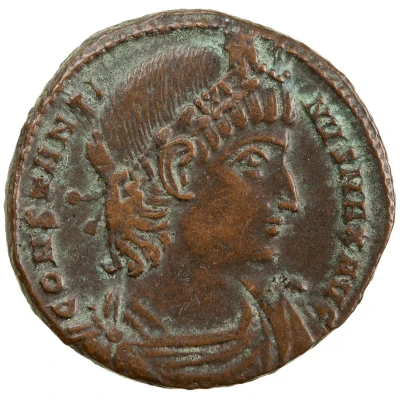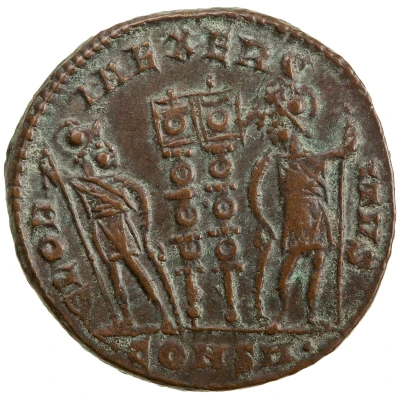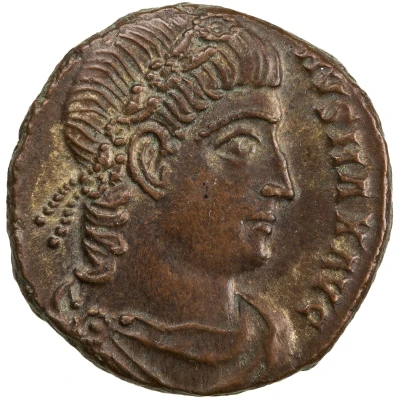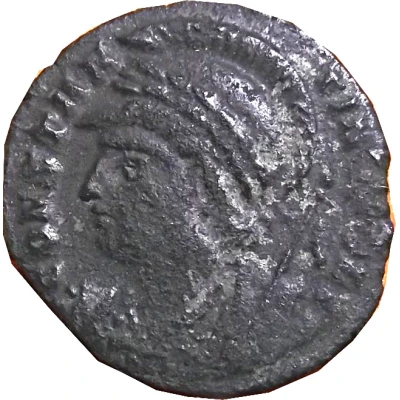
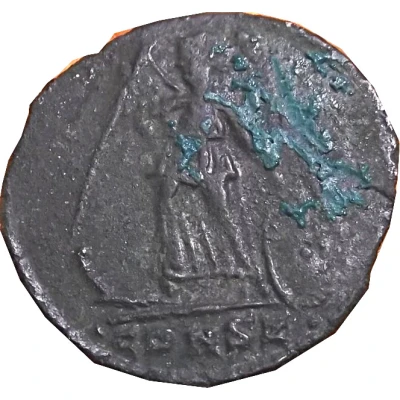

Obverse © Moineau 25 (CC BY-SA)
Nummus - Constantinus I CONSTANTINOPOLI; Constantinopolis
| Bronze | 2.34 g | 18.4 mm |
| Issuer | Rome › Roman Empire (27 BC - 395 AD) |
|---|---|
| Emperor | Constantine I (Flavius Valerius Constantinus) (306-337) |
| Type | Standard circulation coin |
| Years | 333-335 |
| Value | Nummus (1⁄7200) |
| Currency | Solidus, Reform of Constantine (AD 310/324 – 395) |
| Composition | Bronze |
| Weight | 2.34 g |
| Diameter | 18.4 mm |
| Thickness | 1.2 mm |
| Shape | Round (irregular) |
| Technique | Hammered |
| Demonetized | Yes |
| Updated | 2024-10-05 |
| Numista | N#133296 |
|---|---|
| Rarity index | 88% |
Reverse
Victory standing on the left, right foot resting on a bow, holding a scepter with the right hand and leaning on a shield with the left; different workshop and office in exergue.
Script: Latin
Lettering: •CONSZ•
Interesting fact
One interesting fact about the Nummus - Constantinus I (CONSTANTINOPOLI; Constantinopolis) coin is that it features an image of the Roman Emperor Constantine I, also known as Constantine the Great, on one side, and a depiction of the city of Constantinople on the other. This coin was minted during Constantine's reign (333-335 AD) and was used as a standard circulation coin throughout the Roman Empire. The fact that it features an image of the city of Constantinople is significant because it highlights the importance of this city during the Roman Empire, and how it was a symbol of the empire's power and influence. Additionally, the use of bronze in the production of this coin, which weighs 2.34 grams, was a common practice during this time period, as it was a durable and accessible material for coinage.
